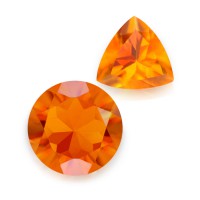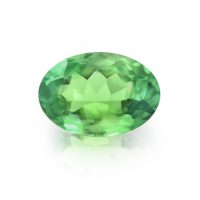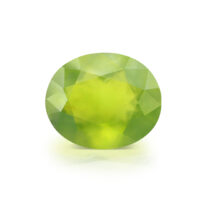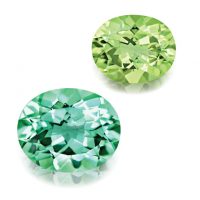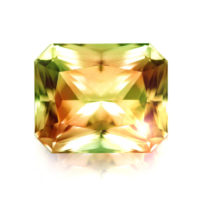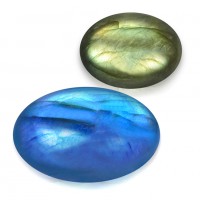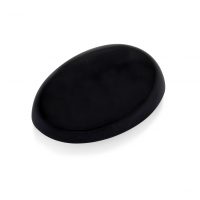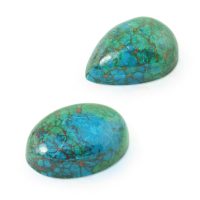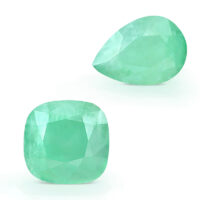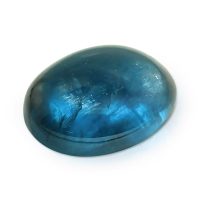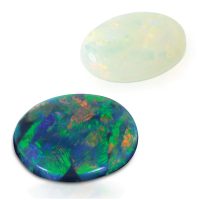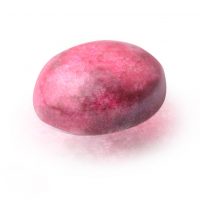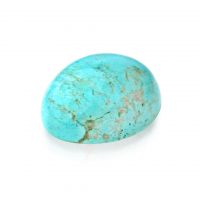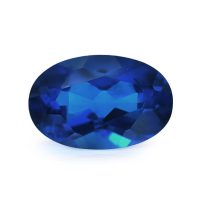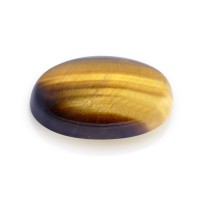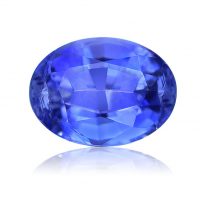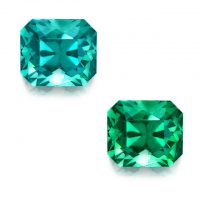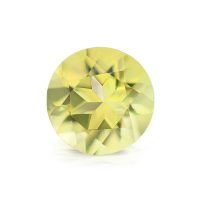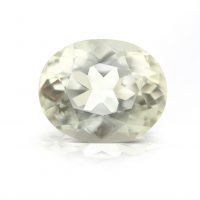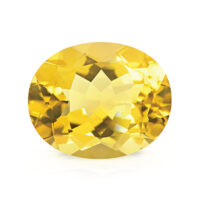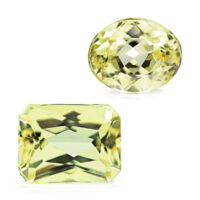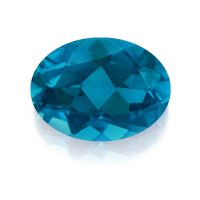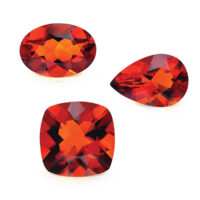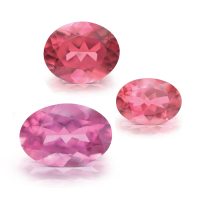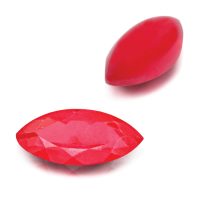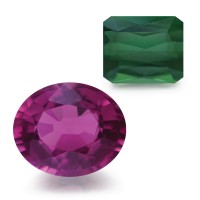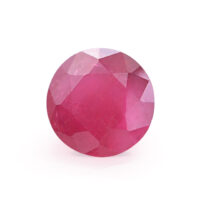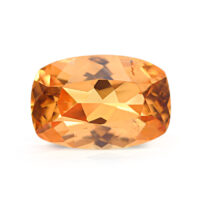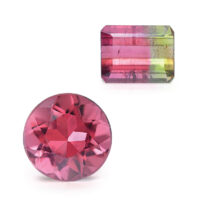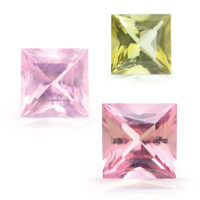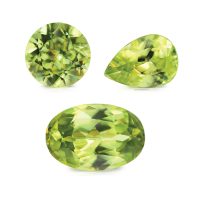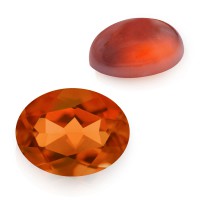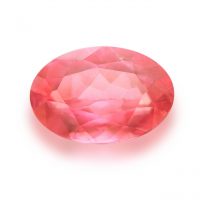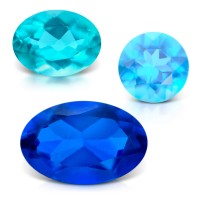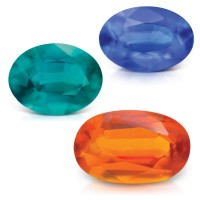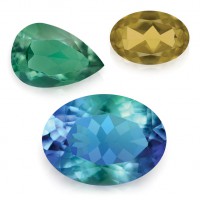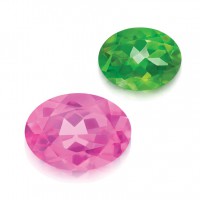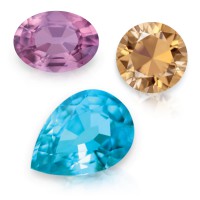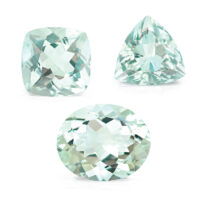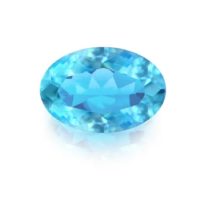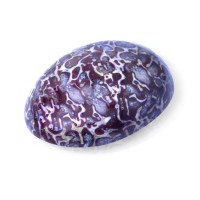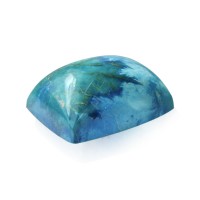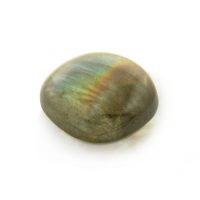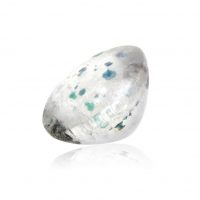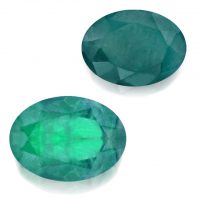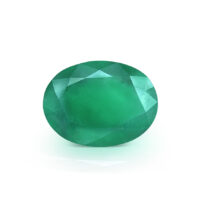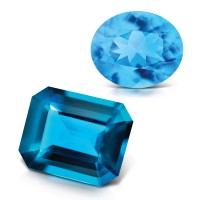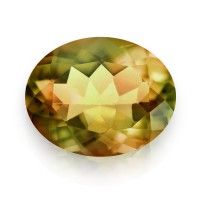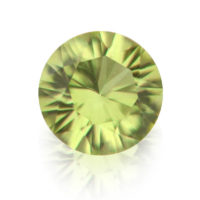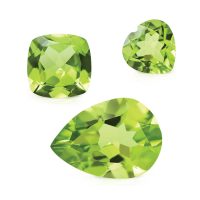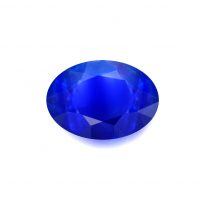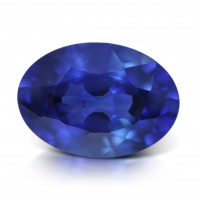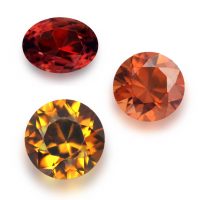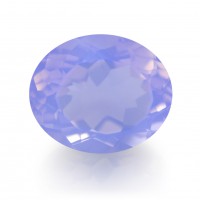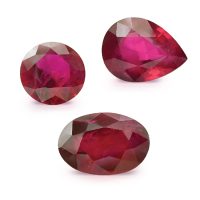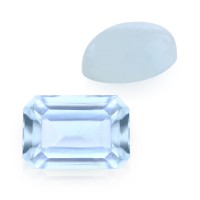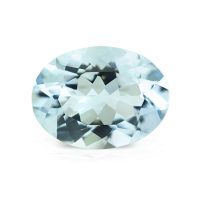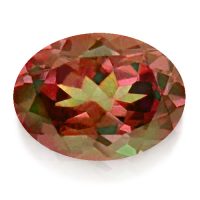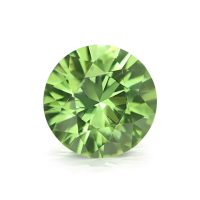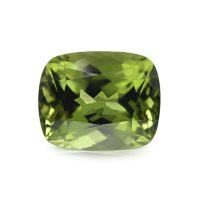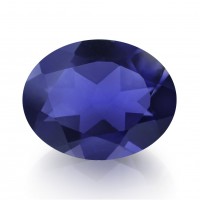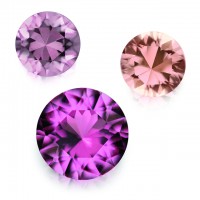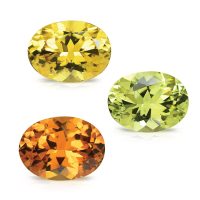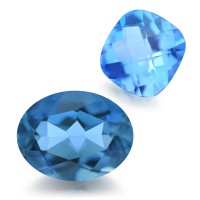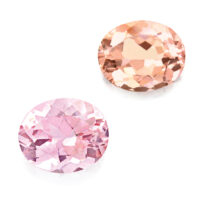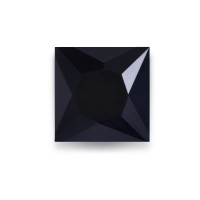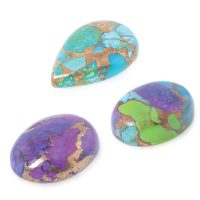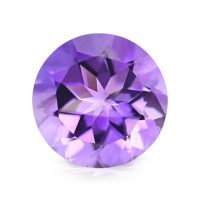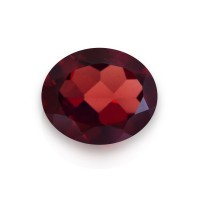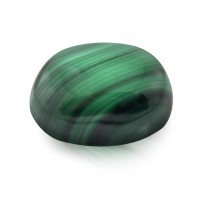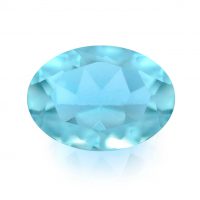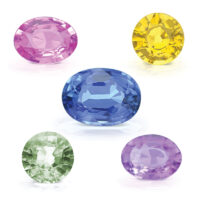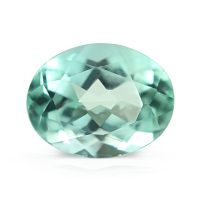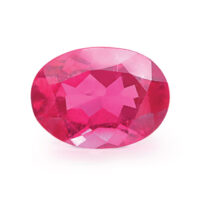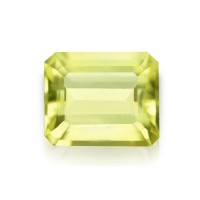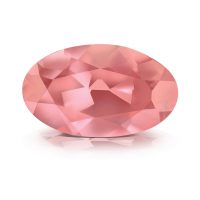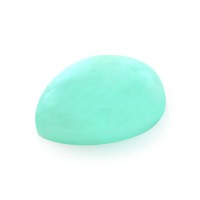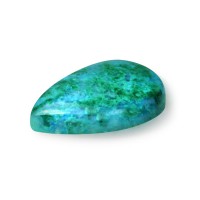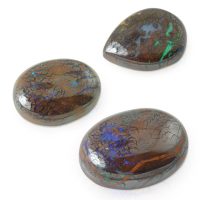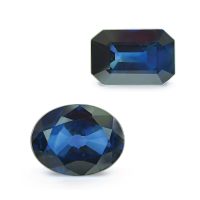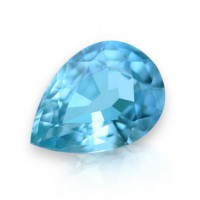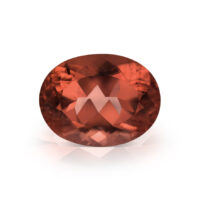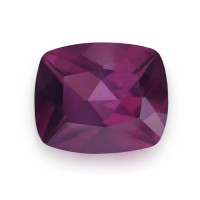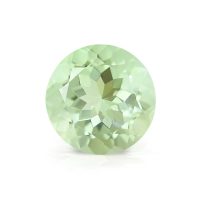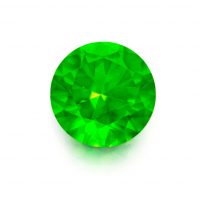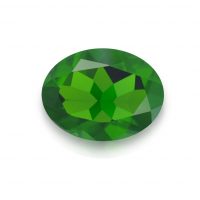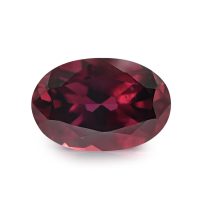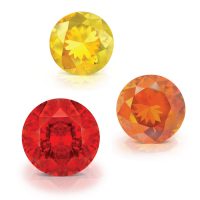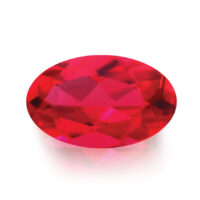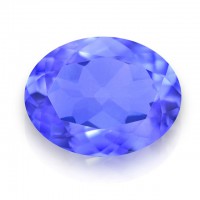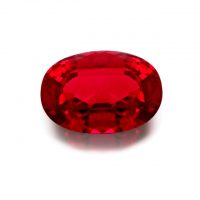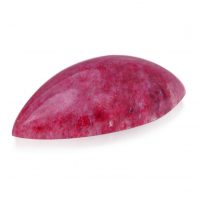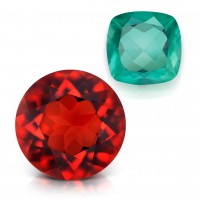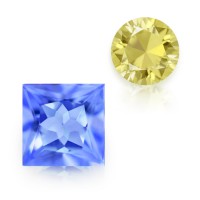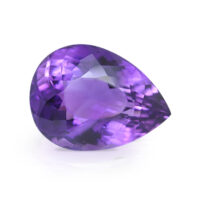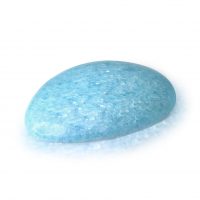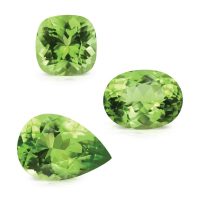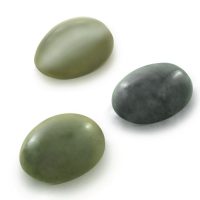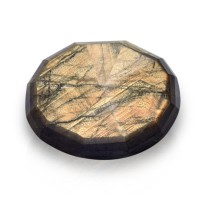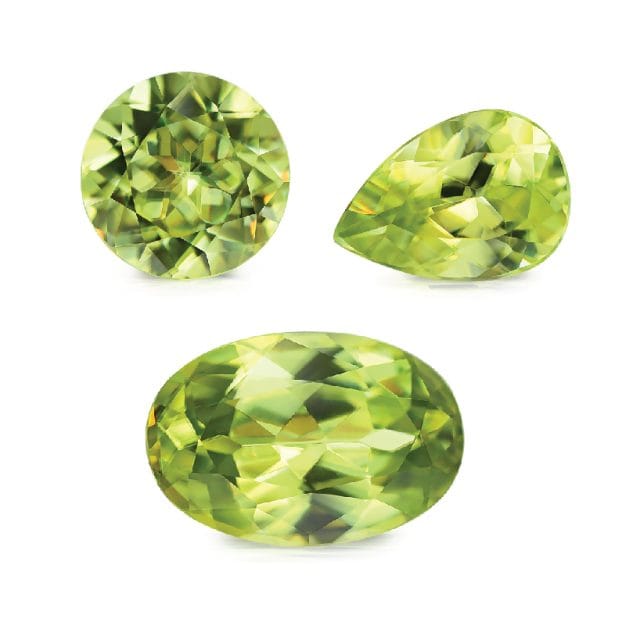

An extremely scarce exotic, virtually unknown to most connoisseurs, Sphene’s stunning citrus-blends, fire exceeding Diamonds, unusually high-brilliance, mesmerizing optical depth, and amazing Diamond-like luster, give it an intense natural beauty, wonderful for fine heirloom jewelry celebrating life’s milestones. Named for its famed locale, since the mid-60s, exceptional Sphene from Capelinha (Cap-el-leen-yah) in southeastern Brazil has been revered worldwide. From ‘bamburros’ (bonanza pockets) when mining resumed in 2015, then vaulted until their deft Brazilian lapidary in 2024, Capelinha Sphene with signature, brilliant, high-clarity, fiery limes, are undeniably rare and uniquely collectable.
Hardness 5 -5.5
Refractive Index 1.843 - 2.110
Relative Density 3.52 - 3.54
Enhancement None
Beauty
Capelinha Sphene beautifully displays characteristic, bright lime-greens (yellowish-greens), with a highly-desirable medium saturation (strength of color) and tone (lightness or darkness of color), the marketplace ideal. Not only one of Sphene’s rarest hues, this body colors’ also highly conducive to visible fire, best exhibiting Sphene’s magnificent dispersion.
Capelinha Sphene’s major value determinants relate to its stunning transparency and signature Diamond-like optical beauty; unusually high refractive index affording excellent brilliance (refractive index: 1.84 – 2.11) approaching Diamond (refractive index: 2.42), the most brilliant natural gemstone; high-fire (also known as dispersion; splitting of light into its component colors) significantly boosts beauty and value, Sphene (dispersion: 0.051) has more fire than Diamond (dispersion: 0.044); amazing Diamond-like (adamantine) luster beautifully reflects a high percentage of surface light; as well as an extremely attractive and mesmerizing double refractivity (splitting light into two rays as it passes through the gem), visible as a doubling of the facets, resulting in beautiful sparkling mosaic patterns and alluring optical depth. While all gemstones of a large size exhibit fire, Sphalerite (0.156) is the world’s most dispersive gemstone, followed by Demantoid/Andradite (0.057), Cerussite (0.055), Sphene (0.051), Diamond (0.044), and Zircon (0.039).
Possessing an intense natural beauty, Sphene facets into brilliant, fiery gems, but presents some unique lapidary challenges. Exhibiting both perfect cleavage (smooth, lustrous surfaces produced with great ease) in one direction, meaning it tends to break along this plane, as well as strong trichroism (three different colors visible from three different angles), appearing to change color depending on the viewing direction, Sphene crystal orientation is critical. While its fire ranks among the highest, Sphene’s body color, clarity, crystal orientation, and lapidary can influence the visual impact of this prized optical property. When correctly orientated, Sphene’s lighter, trichroic color fusions are truly beautiful, noting its high-dispersion and strong pleochroism are not always visible together. Notoriously difficult to polish, Sphene lapidaries must also use a fine lap for both faceting and polishing. Our Capelinha Sphene was optimally faceted in Brazil in December 2024, at a dedicated lapidary in the legendary gem-town of Governador Valadares, home to some of the world’s best cutters.
Almost always included, eye-clean Sphene is extremely rare. Interestingly, inclusions can sometimes increase visible fire (dispersion). Sphene with reasonably good clarity, attractive body color, and some visible fire are valued highest. Notably, every Capelinha Sphene has been optimally cut with an eye-clean clarity (the highest quality clarity grade for colored gemstones as determined by the world’s leading gemological laboratories), maintaining careful orientation to maximize colorful brilliance and defining optical properties, with a high/mirror-like polish (accentuating its adamantine ‘Diamond-like’ luster), and an attractive overall appearance (outline, profile, proportions, and shape). Brilliant, baguette, and mixed cuts are most popular for Sphene, although any shape that maximizes brilliance is ideal.
Transparent to translucent, and occasionally opaque, Sphene was named in 1801 by René Just Haüy (most famous for his association with the rare gemstone, Haüyne) from the Greek ‘sfena’ (wedge), because of its wedge-shaped crystals. While the mineral was first recognized in 1787 by Marc August Pictet, it was originally named ‘Titanite’ in 1795 by Martin Klaproth, for its titanium content. While mineralogists formally use ‘Titanite’, most gemologists and gem traders prefer the informal, ‘Sphene’. Sphene belongs to the Titanite mineral group as the titanium-rich member, and is its only group member typically used as a gemstone. Mineral Titanite is a source of industrial titanium dioxide, used in pigments. Titanite (Sphene) occurs in both igneous rocks and associated pegmatites (coarsely grained igneous rocks), as well as in metamorphic rocks. Trace amounts of aluminum, iron, and other rare-earth elements are typical coloring agents, with chromium causing Sphene’s saturated, intense, overcolor-greens, which are usually heavily included. Often color zoned, most Sphene is brown to green to yellowish-green, occasionally black, blue, colorless, orange, red, or yellow, with an intense fiery brilliance due to its high-dispersion, displaying every spectral color (red, orange, yellow, green, blue, indigo, and violet). Sphene’s hues often depend on variable iron content, with lower concentrations producing greens and yellows, and higher iron resulting in blacks or browns. Sphene’s most valuable gem variety, Chrome Sphene has been historically (and deceptively) marketed as ‘Mexican Emerald’. Some scarce Afghani and Pakistani Sphene even shows the color change effect, usually displaying green to yellow-green in daylight (candescent), and brownish-orange to brown under incandescent (candlelight). Inclusions in some Sphene can create the cat’s eye effect (chatoyancy, single bright reflective line of light similar to a cat’s eye). Derived from the French ‘oeil de chat’ (cat’s eye), Chatoyancy is created by the reflection of light from long needle-shaped inclusions occurring in a parallel arrangement. The chatoyancy of Sphene is dependent on it being cut ‘en cabochon’ (cut in convex form and highly polished, but not faceted) with the fibers parallel to the base and is most visible in a direct, single beam of light. When transparent Sphene is also renowned for their pleochroism (different colors visible from different angles), or more specifically, strong trichroism (three colors), displaying three different colors depending on the body color of the gem. These are typically; near-colorless, yellow to green, and red to yellow-orange; or pale yellow, brownish-yellow, and orange-brown.
Rarity
While its beautiful mineral specimens coveted by collectors are found around the globe, fine gemmy Sphene suitable for faceting is exceedingly rare, and only occasionally available in limited quantities. Gem-quality Sphene comes from Afghanistan, Brazil, Burma (Myanmar), Canada, India, Mexico, Pakistan and Sri Lanka, with Madagascar currently the main source.
Brazil is undeniably one of the world’s most important origins for scarce gemstone minerals and collectable specimens. While Brazilian Sphene was first discovered at Vale do Ribeira in the state of São Paulo in 1890, renowned deposits near the town of Capelinha in the remote northeastern region of the Brazilian state of Minas Gerais (‘general mines’ in Portuguese) are famous for unearthing some of the world’s very best (lime-green) Sphene. Northeast and northwest of Capelinha, metavolcanic rocks (volcanic rocks experiencing metamorphism) hold hundreds of Feldspar veins and pockets containing crystallized Sphene, along with prismatic crystals of Epidote, Green Apatite, Morganite, Quartz (including Amethyst), and Tourmaline. Arguably the world’s finest, Capelinha Sphene crystals reaching up to 20 centimeters are habitually transparent, with a stunning yellowish-green color, bright luster, perfect crystallization, and even twinning (symmetrical intergrowth of two or more crystals), highly-prized by collectors.
Accessed by well-maintained dirt roads, Capelinha’s most important Sphene deposits for facetable gemstones and mineral specimens are located at Campo do Boa and Fanadinho Creek, but other occurrences in the area have also yielded excellent gemmy rough and high-quality collector specimens, within a radius of approximately 50 kilometers from the town (Source: Capelinha!, The Mineralogical Record, Vol. 53 (3), May 2022). Sphene was discovered at Campo do Boa in 1966 by Manoel Pimentel Figueiredo, who initially thought it Brazilianite. The mining area is located about 24 kilometers northwest of the town, near the village of São Caetano, close to the primary ‘garimpos’ (artisanal mines). At its peak, around 500 miners worked this deposit, in teams of 15 to 20 people. Once thought ostensibly depleted, after a very long break, limited mining thankfully resumed in 2015. Our gemstones are from several ‘bamburros’ (bonanza pockets) discovered during this time.
Similar Sphene deposits were found at Fanadinho Creek in the early 90s, and having received artisanal mining permission from the Brazilian Mining National Agency, are now also worked. Discovered in the 40s, Ribeiräo da Folha (‘Folha Creek’ in Portuguese) is historically Capelinha’s second most important Sphene deposit, with the Fanado area somewhat mined from 1980 to 2000. Other deposits in the Capelinha area include the Resplendor district, as well as the municipalities of Água Boa, Angelândia, Itamarandiba, Malacacheta, and Santa Maria do Suaçuí.
Unsurprisingly, the trading of Capelinha Sphene’s esteemed mineral specimens and gemmy-crystals is chiefly controlled by influential local miners, cutters, and traders from the celebrated gem-towns and lapidary centers of Governador Valadares and Teófilo Otoni. While Capelinha still occasionally, sporadically unearths high-quality Sphene crystals, crystal clusters, and matrix mineral specimens prized by collectors, unless you’re well-connected locally, gemmy-rough suitable for faceting, calibrated gemstone parcels apt for jewelry collections, or even faceted free-size, can be challenging to obtain, especially in the open marketplace.
Frequently smaller than 1 carat, size demands a premium in Sphene. While larger eye-clean Capelinha Sphene’s geologically scarce, any bigger crystals appealing to collectors are also usually kept as mineral specimens. Clean Brazilian Sphene over 5 carats is impossibly rare, with Indian and Sri Lankan up to 10 carats, Madagascar maximum 15 carats, and Burma (Myanmar) reportedly yielding Sphene over 20 carats.
Testament to the quality of these historic, decade-old crystals, the calibrated cut yield was an incredible 42 percent, truly astounding given the usual gem mineral return’s 20 – 35 percent. Capelinha Sphene is also one of the few gemstones that are totally natural and unenhanced, accentuating desirability, rarity, and value. Only occasionally chanced, heating can transform some Sphene into oranges or reds.
Durability & Care
A spectacular addition to any jewelry collection, Capelinha Sphene’s a rare, exotic gemstone, perfect for special occasions (Mohs’ Hardness: 5 – 5.5). Always carefully store Capelinha Sphene to avoid scuffs and scratches. Clean with gentle soap and lukewarm water, scrubbing behind the gem with a very soft toothbrush as necessary. After cleaning, pat dry with a soft towel or chamois cloth.
Map Location
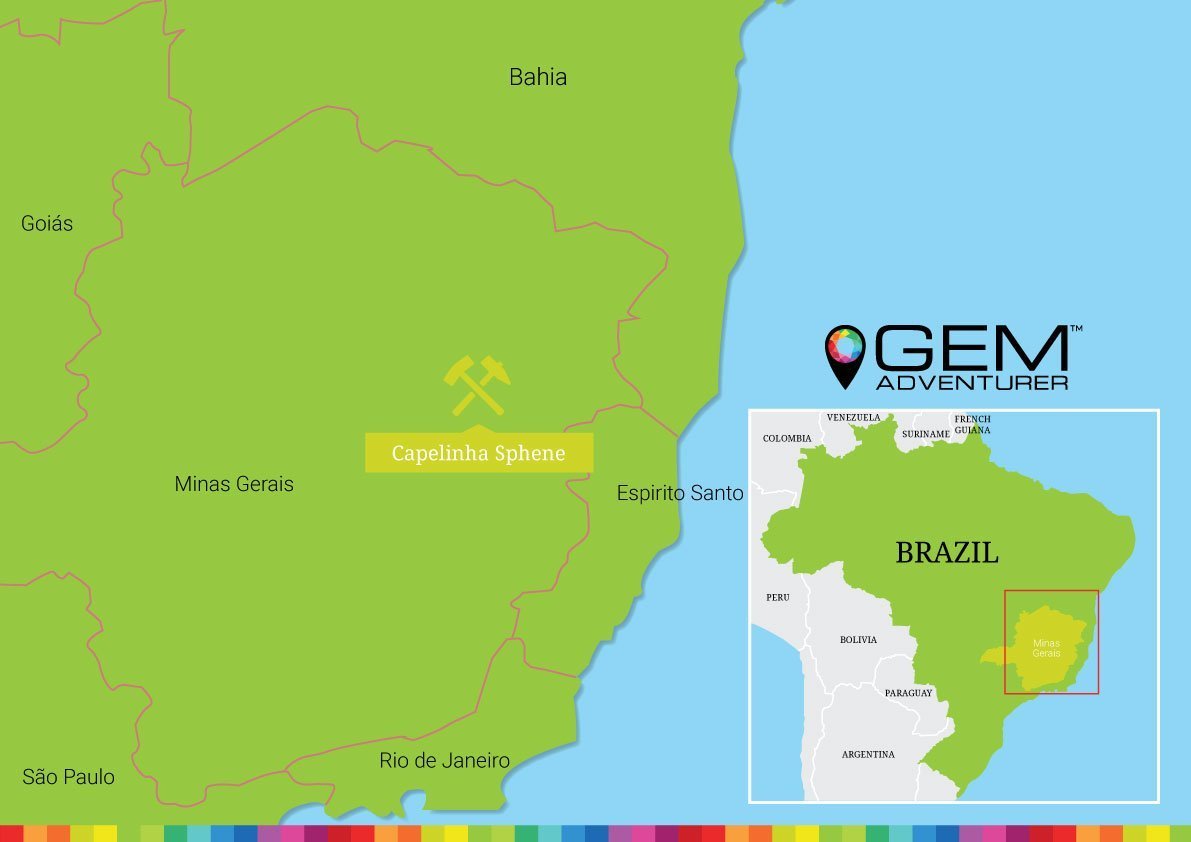
Click map to enlarge




